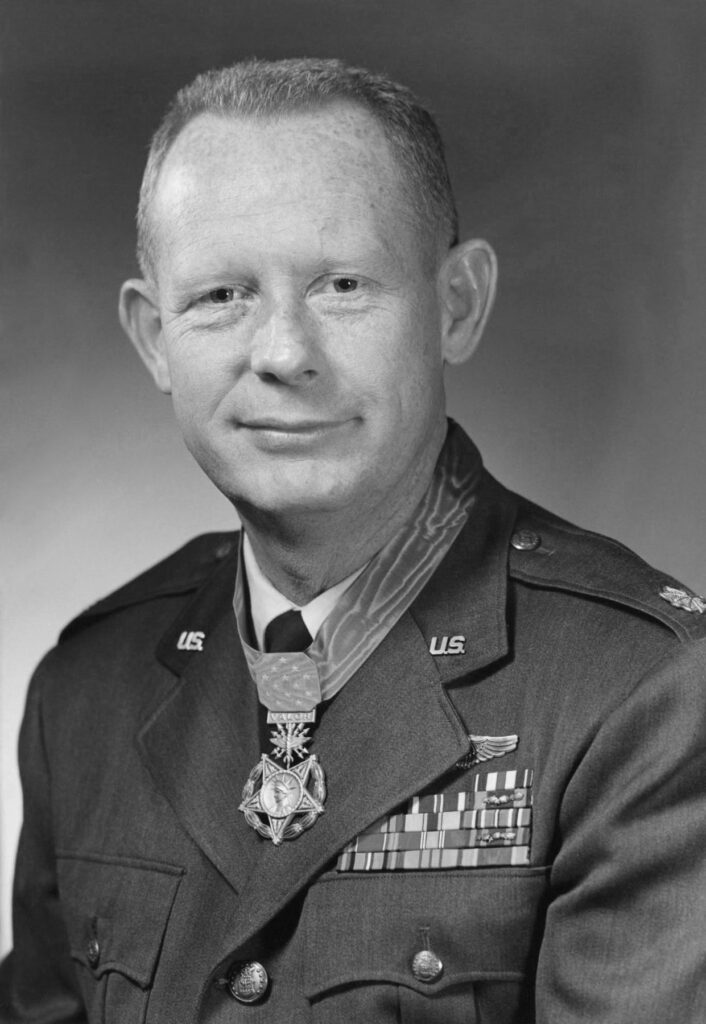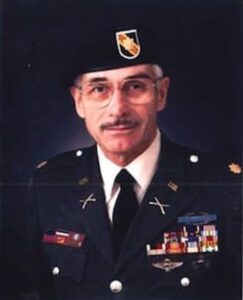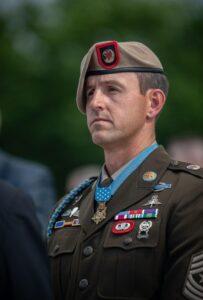Meet Air Force MOH Recipient Bernard Fisher
Bernard ‘Bernie’ Fisher grew up in Clearfield, Utah. As a high school senior, he served in the Navy, where he became enamored with sailing. In 1947, he enrolled at Boise State Junior College, transferring to the University of Utah in 1949. While in Salt Lake City, he was a member of the Air National Guard from 1947 to 1950. Fisher was commissioned with the Air Force the following year and was unable to finish his bachelor’s degree. He completed pilot training and became a jet fighter pilot.
In 1965, he volunteered for active duty in Vietnam. Over the next year, Fisher flew 200 combat missions in an A-1E Skyraider at Pleiku Air Force Base in South Vietnam. Little did he know that one of those missions would mean the difference between life and death for him—and for a close friend and fellow pilot.
A Dangerous Rescue Mission
On March 10, 1966, then-Major Fisher found himself flying from Pleiku to the A Shau Valley where a Special Forces camp was under attack from 2,000 North Vietnamese. He observed a fellow aircraft brought down by enemy gunfire, crashing along the airstrip at the camp. Thankfully, his friend and pilot then-Major Dafford Myers narrowly escaped the burning plane, running for safety at a nearby embankment. Surrounded by enemy troops and constant fire, it seemed that Myers would likely be captured before he was rescued.
Knowing that the odds of success were low, Fisher made a daring decision to land his A-1E Skyraider on the camp’s airstrip in an attempt to rescue the stranded pilot. Under a barrage of enemy fire, he carefully taxied down the runway, which was cluttered with ammunition and shell casings. Fisher stopped the plane to help Myers aboard. Although the enemy continued attacking with small arms fire, Fisher expertly maneuvered a safe takeoff. His crazy plan had worked.
A Life of Dedicated Service
For his heroic efforts and selfless bravery, Fisher received the Medal of Honor from President Lyndon B. Johnson on January 19, 1967. He was the first living Air Force Recipient to receive the Medal, the first Air Force Recipient to receive the Medal during the Vietnam War, and the first Recipient to receive the Medal of Honor designed specifically for Air Force personnel. Although the Air Force had been established in 1947, it had used the Army-designed Medal of Honor until the Air Force version was designed and approved in 1965—two years before Fisher would receive it.
After the Vietnam War, Fisher served in the Air Defense Command and flew jet interceptors. In 1974, he retired as a colonel, and he and his wife, Realla, moved to Kuna, Idaho. In 1984, he ran unsuccessfully for governor of Idaho. Finally, in 2008, the University of Utah awarded him a diploma for his academic achievements, 57 years after he had attended classes there. He died August 16, 2014, in Boise, Idaho.
His A-1 Skyraider—which he flew on the dangerous Medal of Honor rescue mission—is on display at the National Museum of the United States Air Force in Dayton, Ohio. Fisher’s gallantry and his devotion to his country and his peers remain a beacon of hope and inspiration for museum visitors, veterans, and current service members alike.




